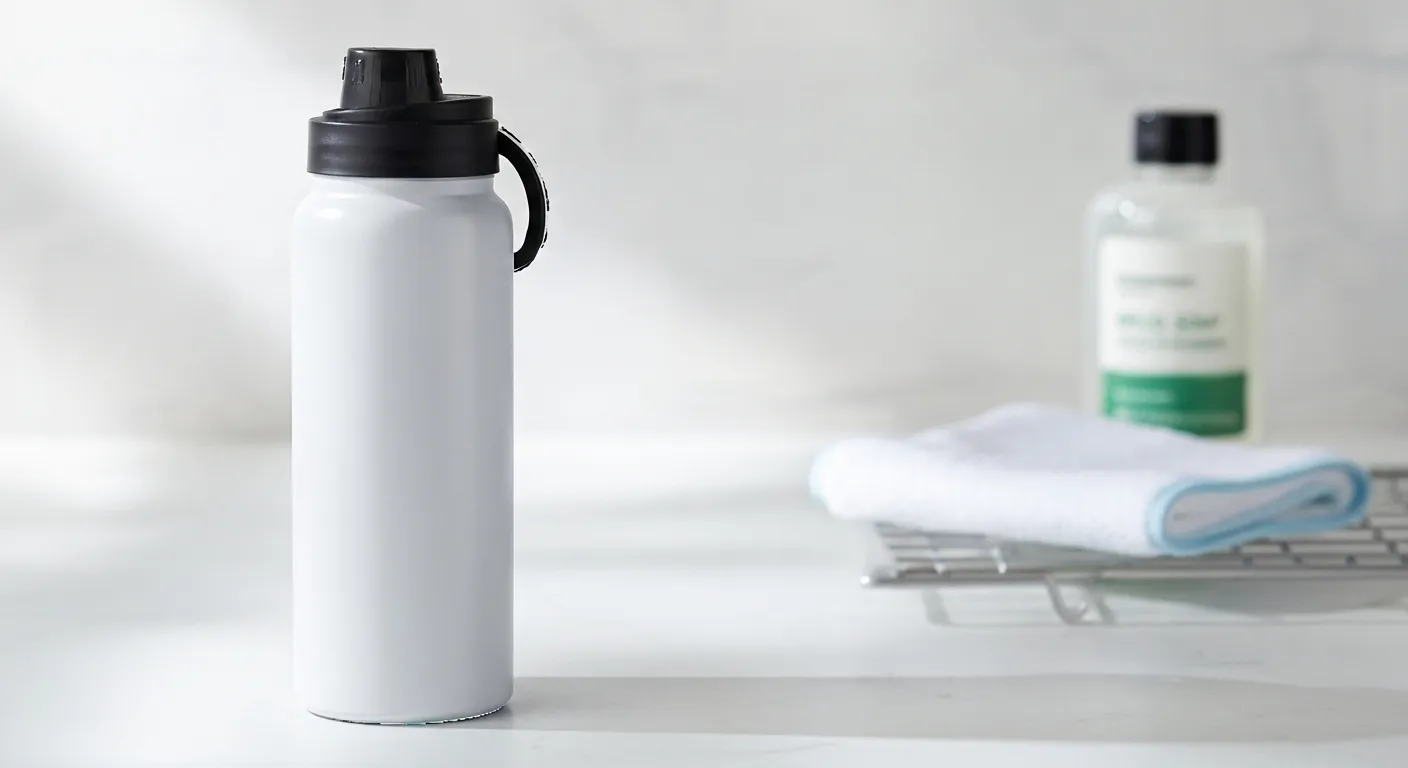
Corrosion inside metal bottles ruins flavor and safety—here's how to keep your bottle clean and rust-free for the long haul.
Corrosion happens when the protective chromium oxide layer inside stainless steel bottles breaks down, allowing rust to form—especially in acidic, salty, or low-oxygen conditions.
Read on to learn what causes corrosion, how to prevent it, and when it's time to replace your bottle.
Why does corrosion occur inside metal water bottles?
Even stainless steel can rust if neglected or exposed to the wrong conditions.
Corrosion occurs when acids, salts, or lack of oxygen damage the metal's protective layer, allowing water and air to oxidize the steel.
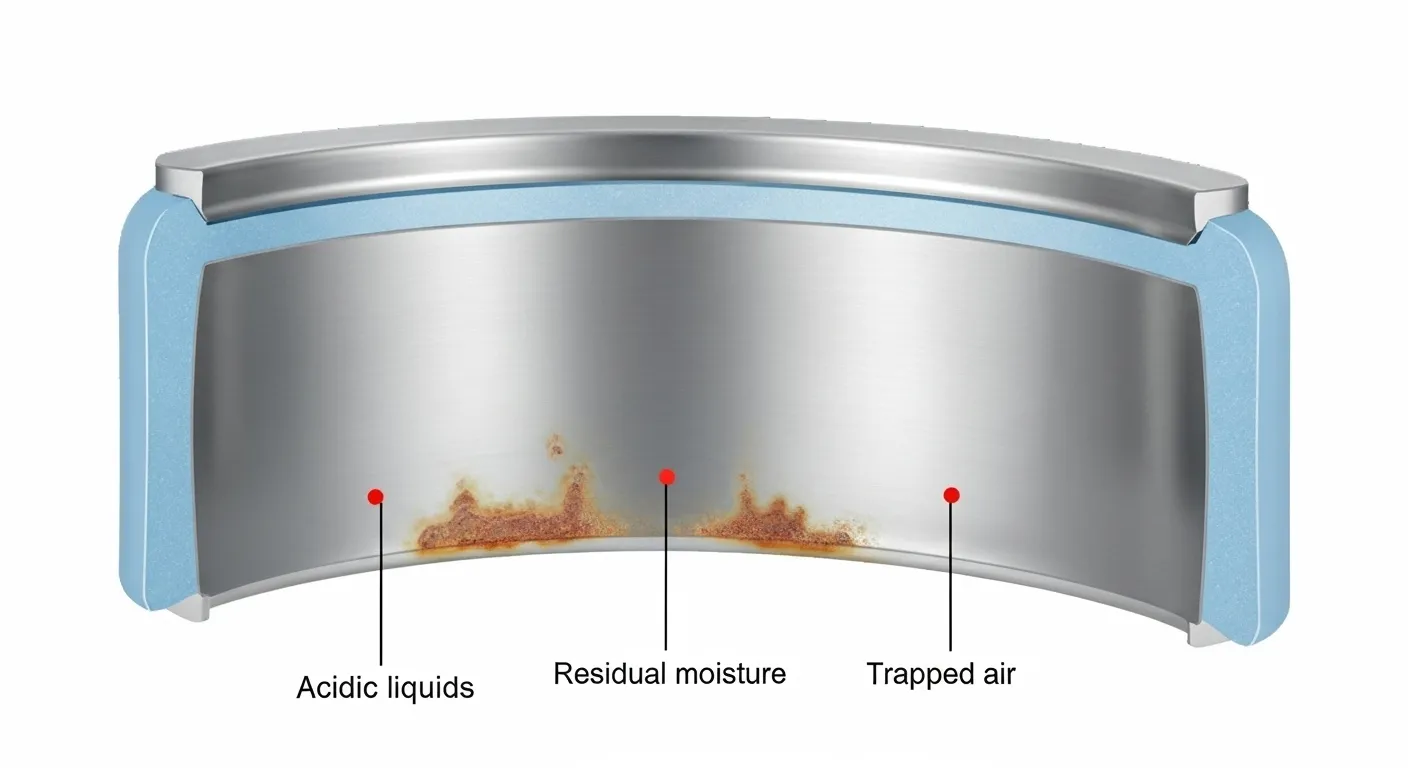
Common Corrosion Triggers
- Acidic drinks (citrus juice, soda)
- Saltwater or chloride-rich tap water
- Moisture trapped in sealed bottles
- Residual sugars or unwashed liquids1
Over time, these weaken the internal surface, forming rust spots or discoloration.
What role does stainless steel's chromium oxide layer play in preventing corrosion?
It's what keeps your bottle safe and shiny.
Stainless steel contains chromium, which reacts with oxygen to form a self-healing oxide layer that protects the surface from rust and corrosion.
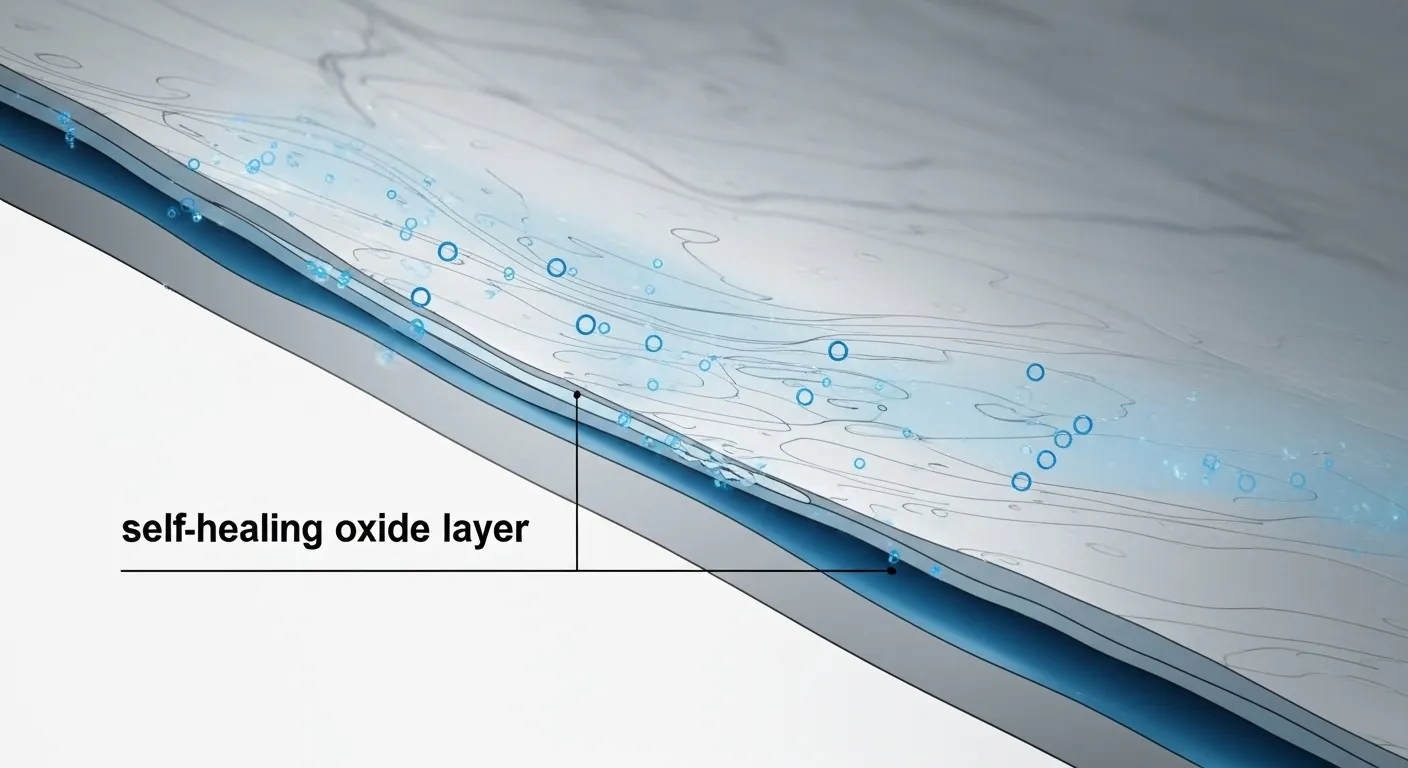
This passive film only works if oxygen is present2—seal the bottle too tightly or let water pool inside, and the layer can't regenerate.
How do acidic or salty beverages affect the inside of metal bottles?
They're the biggest threat to the steel.
Acids and salts break down the protective oxide layer, accelerating metal degradation and rust formation inside your bottle.
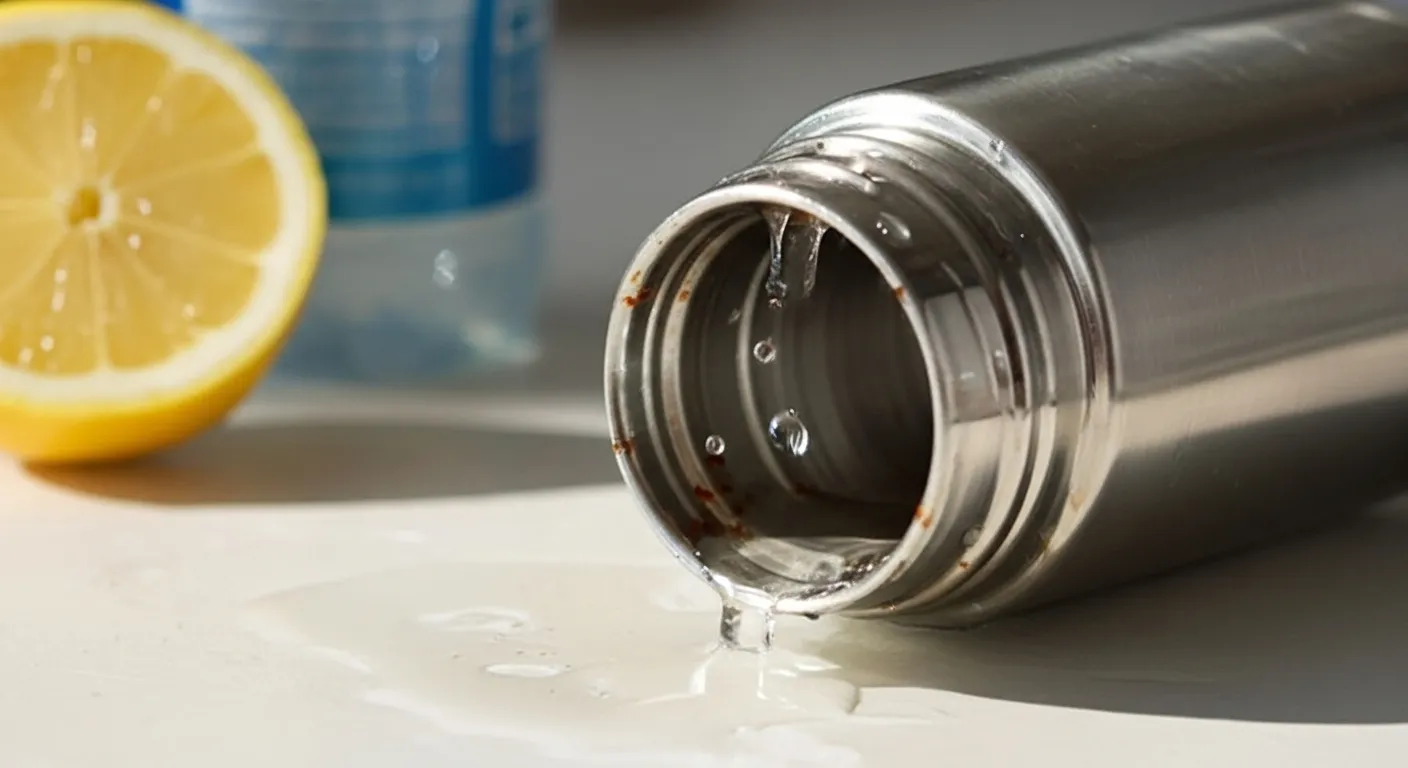
Risky Liquids
- Lemon water
- Electrolyte or saltwater
- Soda or carbonated drinks
- Sports drinks3
Always rinse immediately after use to stop corrosion before it starts.
Can lack of oxygen inside a sealed bottle lead to corrosion?
Yes—and it's surprisingly common.
Oxygen is needed to maintain the chromium oxide layer. Without it, rust can form even on high-grade stainless steel.
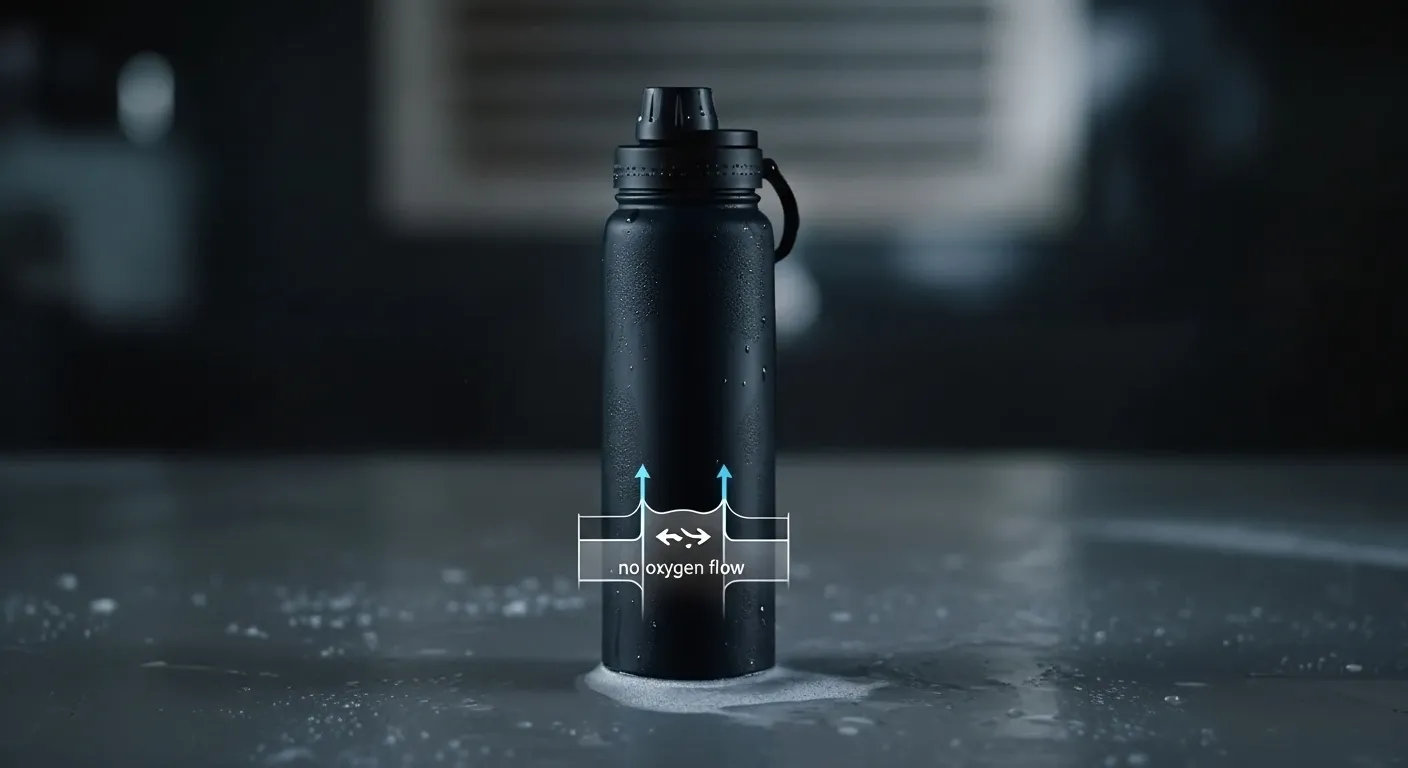
Don't store wet bottles with the lid closed4. Always dry them fully and leave the cap off for airflow.
What cleaning and drying habits help prevent internal corrosion?
Simple habits go a long way.
Rinse after each use, dry thoroughly, and clean with mild soap or vinegar to prevent corrosion from acidic residue or moisture.

Best Practices
- Rinse after every use, especially with flavored or salty drinks
- Use a bottle brush weekly
- Dry upside down with lid off
- Store in a dry, open space5
These habits prevent rust and extend the bottle's life.
How does water quality (chlorides, salinity) influence corrosion risk?
It's more important than you might think.
Tap water high in chlorides or total dissolved solids (TDS) can corrode the internal surface over time, especially when bottles are kept wet.
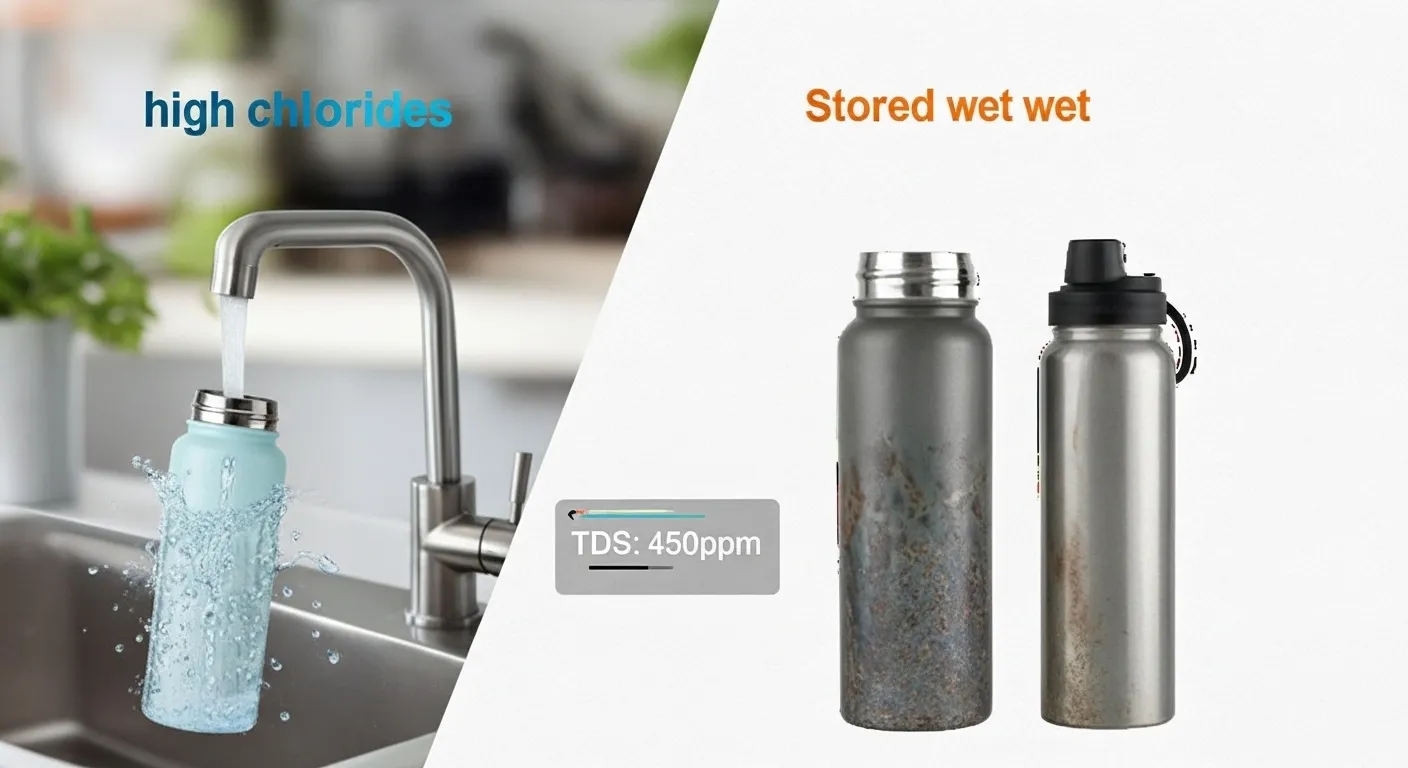
If you live near the ocean or use water softeners, drying is extra important6.
Are all stainless steel bottles equally resistant to corrosion?
No—quality matters.
High-grade stainless steel (like 18/8 or 304) resists corrosion better than cheaper blends with lower chromium or nickel content.
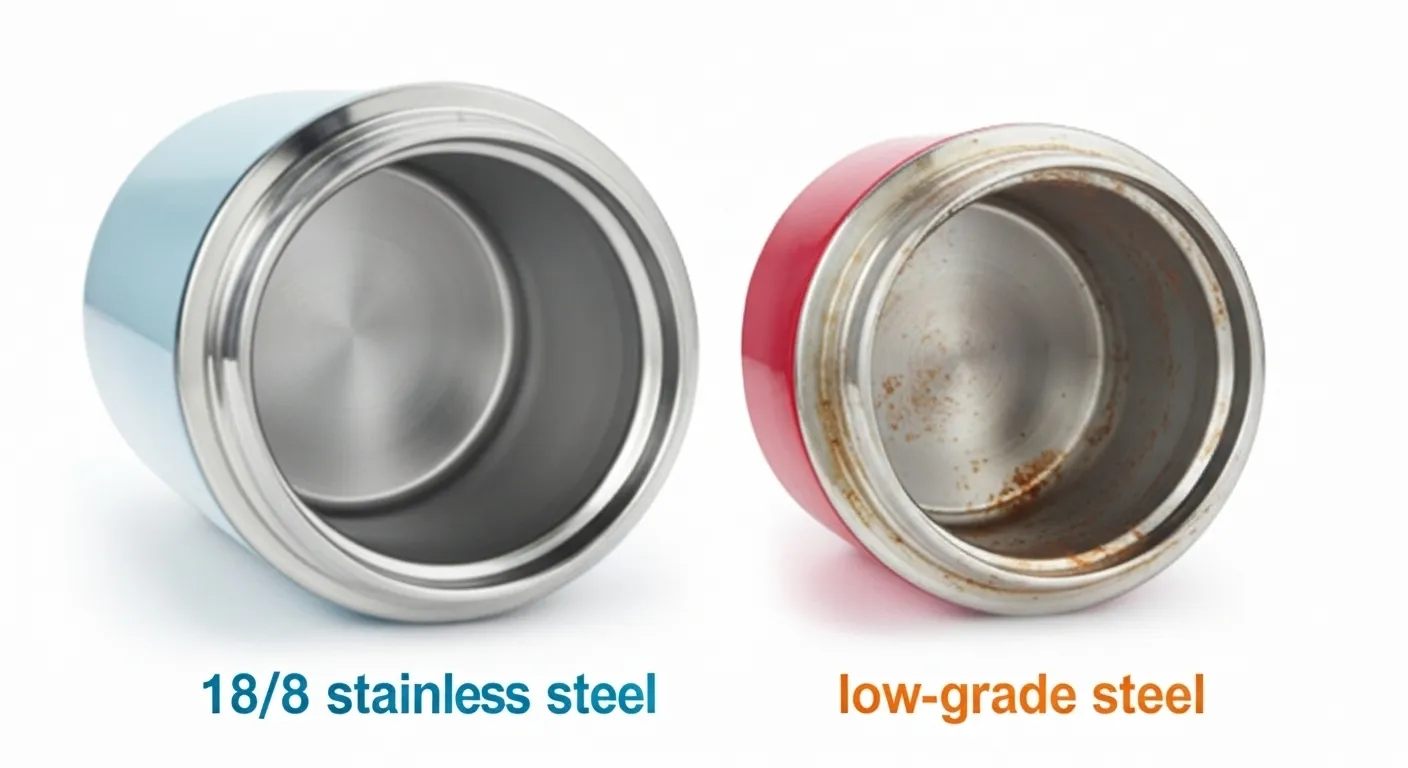
Cheap bottles may corrode faster due to weld defects or thin steel7. Investing in quality pays off.
What are the signs that my metal water bottle is corroding?
Don't ignore these subtle hints.
Rust spots, strange metallic tastes, discoloration, and gritty or rough surfaces inside the bottle are all signs of corrosion.
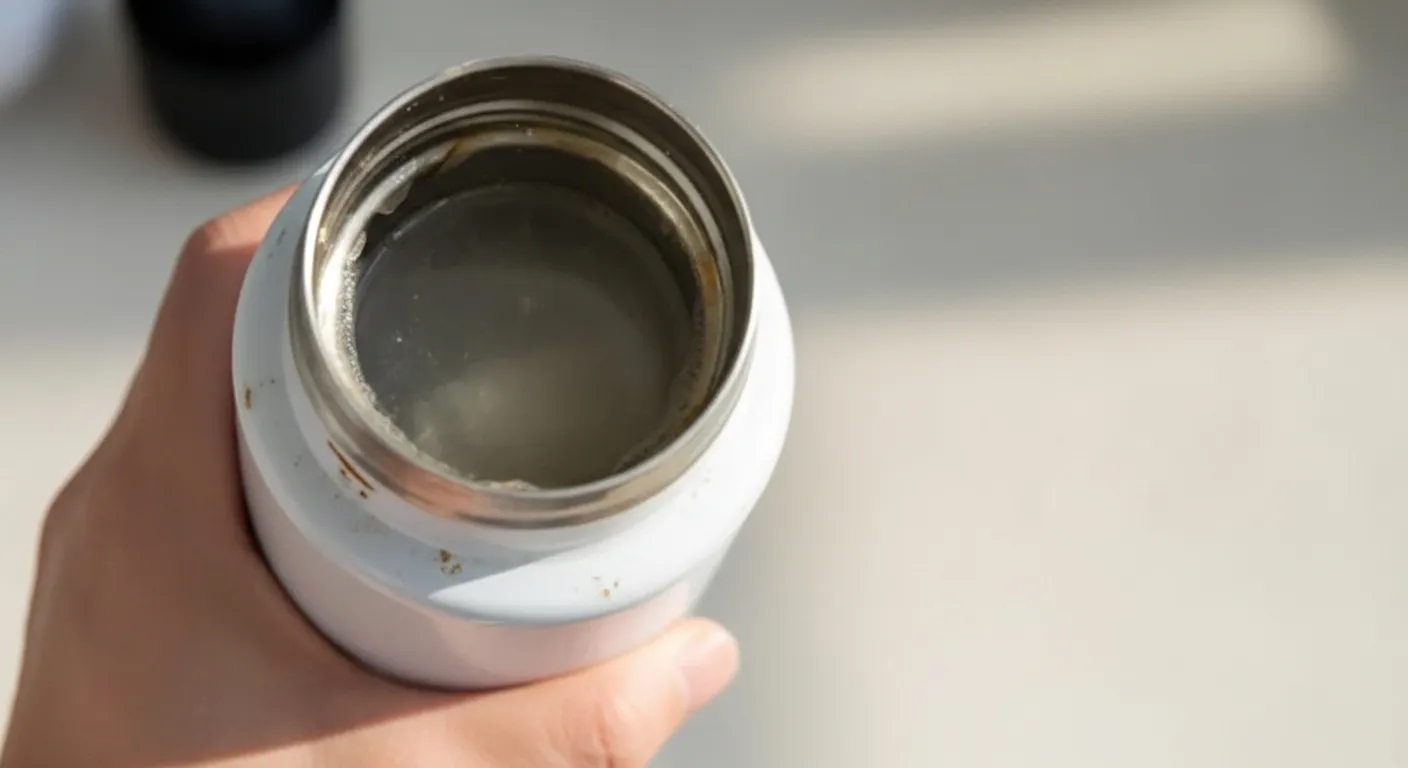
If you notice these, stop using the bottle8 until it's cleaned—or replaced if damage is severe.
How can I safely remove rust or corrosion from inside my bottle?
Try this before tossing it out.
Soak the bottle in vinegar overnight, scrub with aluminum foil or a bottle brush, and rinse with hot water. For tough rust, use oxygen bleach.
Cleaning Steps
- Fill with white vinegar and let sit 12–24 hours
- Scrub with foil or brush
- Rinse well with hot water
- Dry completely with the lid off9
Never use chlorine bleach—it can make stainless steel rust faster.
When should I consider replacing a corroded metal water bottle?
Safety first.
If rust returns frequently, alters the taste, or leaves particles in your drink, it's time to replace the bottle.
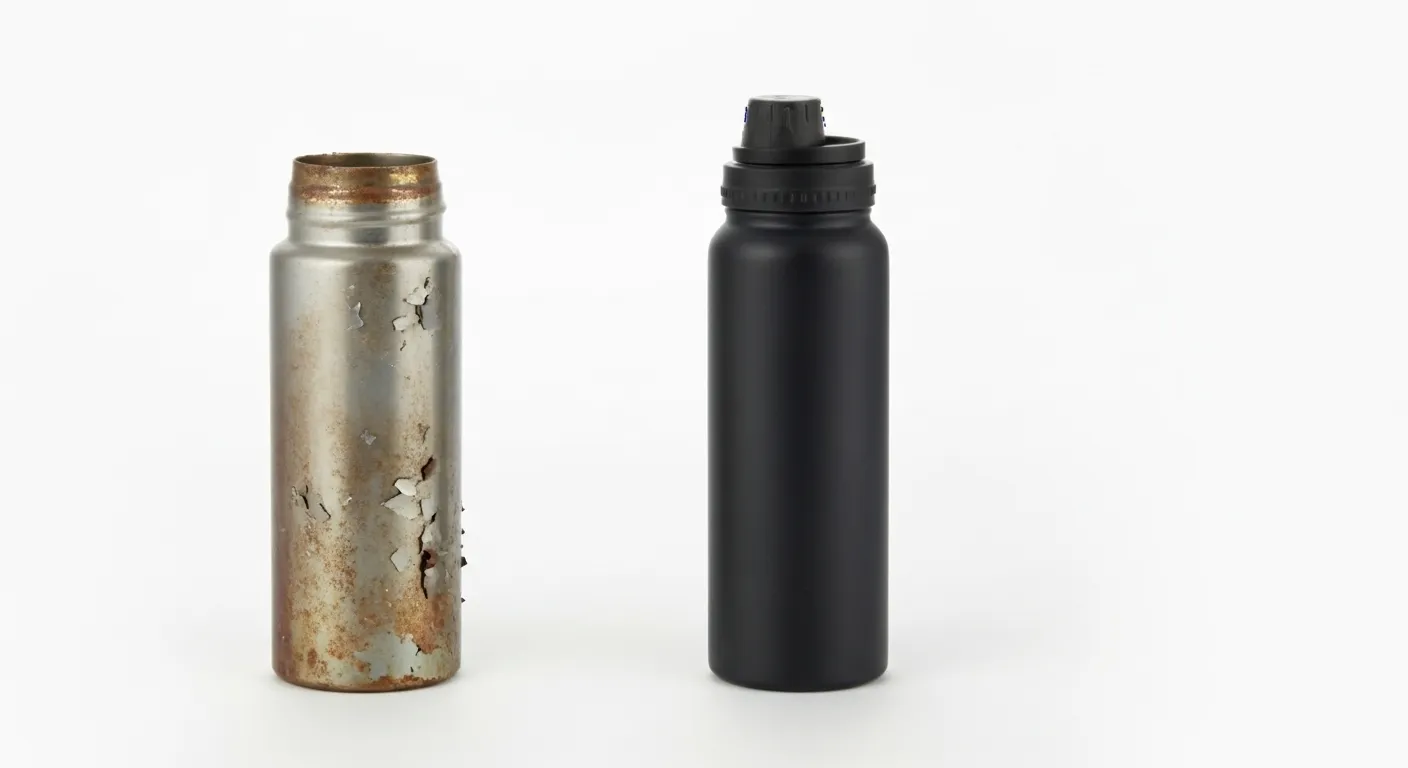
Extensive pitting or flaking is irreversible10 and unsafe for regular use. Switch to a high-grade bottle and start fresh with better care habits.
Conclusion
Prevent corrosion inside your metal water bottle by rinsing after use, drying thoroughly, and avoiding acidic or salty drinks—your bottle will last years longer.
FAQs
Can stainless steel rust inside if left wet overnight?
Yes, especially if acidic drinks were inside or there's no airflow.
Is it safe to drink from a bottle with a little rust?
No. Rust can harbor bacteria and alter taste—clean or replace the bottle.
Does boiling water damage the inside of a stainless steel bottle?
No, but it may loosen residues—rinse well afterward.
How often should I clean my metal bottle?
Rinse after every use and deep clean at least once a week.
Do powder-coated bottles prevent internal rust?
No. Powder coating protects the outside; the inside still needs care.
Footnotes:
-
Learn how leftover beverages create acidic environments that speed up corrosion in your bottle and discover proper cleaning techniques to prevent residue buildup. ↩
-
Discover why the chromium oxide layer needs oxygen to regenerate and protect your bottle from rust, and understand the science behind stainless steel's self-healing properties. ↩
-
Understand why sports drinks with pH 3.16-3.70 can damage stainless steel surfaces and learn which beverages pose the highest risk to your bottle's interior. ↩
-
Find out why leaving the cap off allows proper airflow and prevents trapped moisture corrosion, plus get expert tips on vacuum-insulated bottle care. ↩
-
Learn proper storage techniques that prevent condensation and moisture buildup, helping you extend your bottle's lifespan with simple storage habits. ↩
-
Understand how chloride levels above 100 ppm increase corrosion risk in stainless steel and why water quality matters, especially in coastal areas or with water softeners. ↩
-
Discover why poor welding and low-grade materials lead to premature bottle failure and learn how to identify quality construction before purchasing. ↩
-
Learn why rusty bottles pose health risks and when it's unsafe to continue use, including signs that indicate your bottle needs immediate replacement. ↩
-
Get step-by-step instructions for proper drying techniques to prevent rust formation and learn the complete vinegar cleaning method for removing existing corrosion. ↩
-
Understand why deep corrosion damage cannot be repaired and requires replacement, plus learn to recognize when pitting has compromised your bottle's safety. ↩

